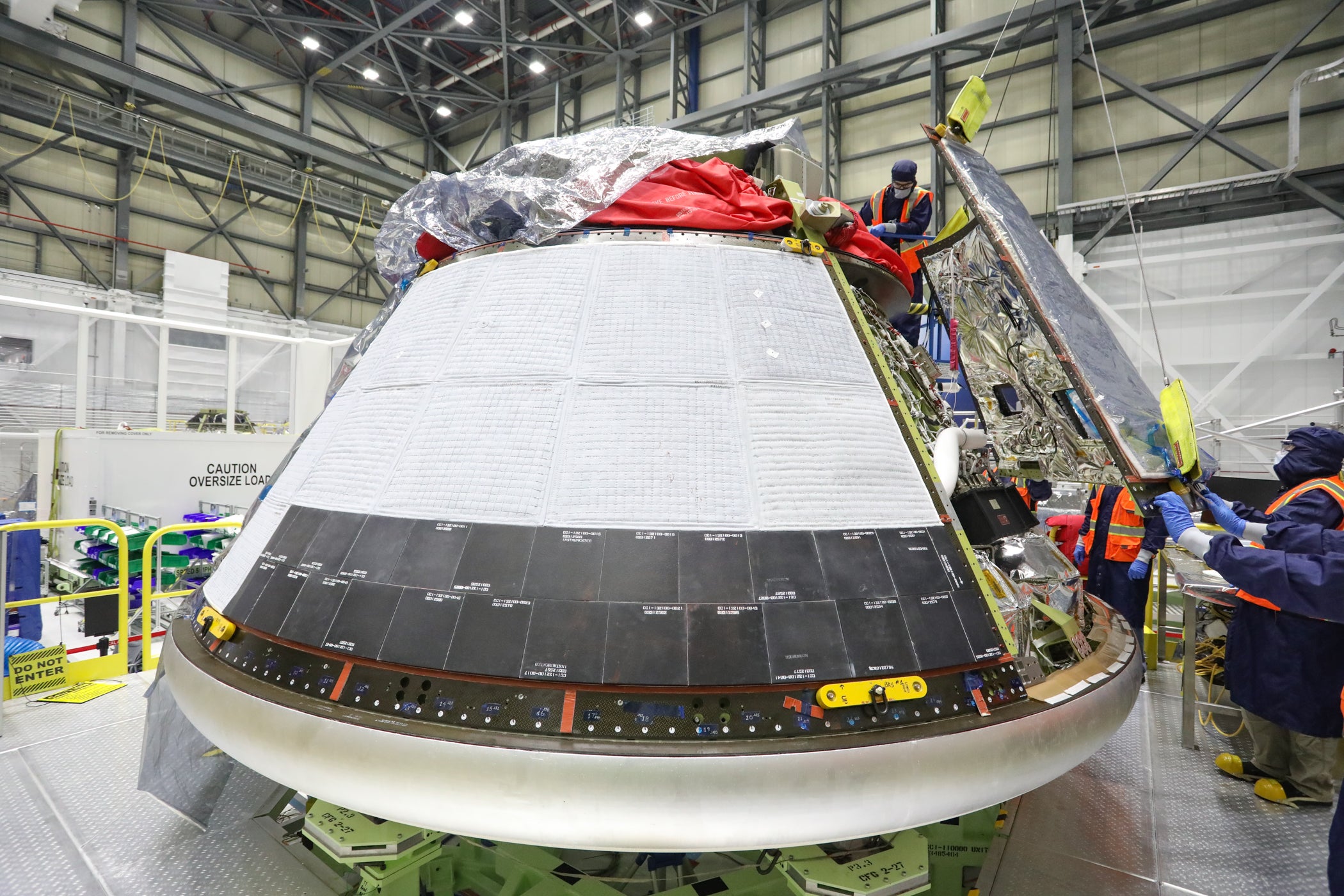Space schedule: Nasa Crew-3 coming home, Boeing prepares for Starliner test
Nasa will work on fixing problems with its Moon rocket while prepaing to bring Crew-3 astronauts home from space, and to send the Boeing Starliner there

Your support helps us to tell the story
From reproductive rights to climate change to Big Tech, The Independent is on the ground when the story is developing. Whether it's investigating the financials of Elon Musk's pro-Trump PAC or producing our latest documentary, 'The A Word', which shines a light on the American women fighting for reproductive rights, we know how important it is to parse out the facts from the messaging.
At such a critical moment in US history, we need reporters on the ground. Your donation allows us to keep sending journalists to speak to both sides of the story.
The Independent is trusted by Americans across the entire political spectrum. And unlike many other quality news outlets, we choose not to lock Americans out of our reporting and analysis with paywalls. We believe quality journalism should be available to everyone, paid for by those who can afford it.
Your support makes all the difference.The Crew Dragon Spacecraft carrying Nasa’s Crew-3 mission astronauts undocked from the International Space Station Thursday morning, setting up a return home early Friday.
Boeing and Nasa are ready to mate Boeing’s Starliner spacecraft to a rocket for an important test flight scheduled for later this month.
Nasa’s Psyche spacecraft recently arrived at Kennedy Space Center in Florida for a final wave of testing before blasting off to a distant asteroid of the same name later this summer.
Read below for more on what’s next in space in the coming weeks.
Crew-3 returns home — Friday
Nasa’s Crew 3 astronauts undocked from the ISS at 1.20am EDT Thursday, and are expected to splashdown in the waters off the Florida coast around 12.3am EDT Friday morning.
The Crew-3 astronauts — Raja Chari, Tom Marshburn, and Kayla Barron of Nasa, and Matthias Maurer of the European Space Agency — have lived on the ISS since November.
Their replacements, Crew-4, arrived on the ISS on 28 April, and will likewise spend roughly six months on the ISS, returning to Earth in the fall.
Boeing’s Orbital Flight Test 2 – 19 May
Crew-3 and Crew-4 flew to the ISS aboard SpaceX Crew Dragon spacecraft and atop SpaceX Falcon 9 rockets. That’s because since 2020, SpaceX has been the only commercial operating approved to fly astronauts as part of Nasa’s Commercial Crew program.
Nasa originally awarded two companies contracts for its commercial crew program, SpaceX, and Boeing. But while SpaceX began regular service with Crew Dragon in 2020, Boeing’s Strainer spacecraft ran into a computer glitch during its 2019 orbital test flight that prevented the uncrewed spacecraft from docking with the space station.
A second shot at that test flight, a mission enumerated as OFT-2, was further delayed in August, but is now scheduled for no earlier than Thursday 19 May.
The Starliner will launch from launch complex 41 at Kennedy Space Center, in Florida, atop a United Launch Alliance Atlas V rocket. Nasa officials, including administrator Bill Nelson, have repeatedly said that hardware redundancy, a second ride to the ISS using different technology than SpaceX has so far, is important to the space agency.
Nasa’s <strong>Moon</strong> rocket test flight — August, maybe
As recently as early April, Nasa officials were still discussing launch windows in May, June and July for the first test flight of its Space Launch System (SLS) Moon rocket and Orion spacecraft.
But after three aborted attempts to complete a crucial launchpad fueling test known as a wet dress rehearsal since 17 March, Nasa rolled the rolled the 322-foot-tall rocket back into Vehicle Assembly Building on Tuesday 26 April and readjusted expectations. During a media call Tuesday morning, Nasa assistant administrator Bob Cabana suggested making a SLS test flight by sometime August would be a schedule the space agency would have to work hard for at this point.
SLS and Orion together form the core of Nasa’s Artemis Moon program. Artemis I, an uncrewed test flight of both vehicles, must take place before Artemis II, a crewed lunar flyby scheduled for May 2024, and Artemis III, a mission to return humans to the lunar surface scheduled for 2025.
Psyche asteroid mission — launch scheduled for 1 August
On 2 May, Nasa’s Psyche spacecraft was flown from the space agency’s Jet Propulsion Laboratory facility in California to Kennedy Space Center in Florida, where the craft will undergo testing in preparation for a 1 August launch.
Psyche will be the first spacecraft to use solar-electric propulsion to travel beyond the Moon, using 800s square feet of solar panels to power its Hall effect thrusters for the 1.5 billion mile journey to the asteroid Psyche in the main asteroid belt. Thrusters use electric fields to push propellant and generate thrust, and are very efficient, but take a long time to build up speed — Psyche the spacecraft won’t reach Psyche the asteroid until 2026.
Join our commenting forum
Join thought-provoking conversations, follow other Independent readers and see their replies
Comments